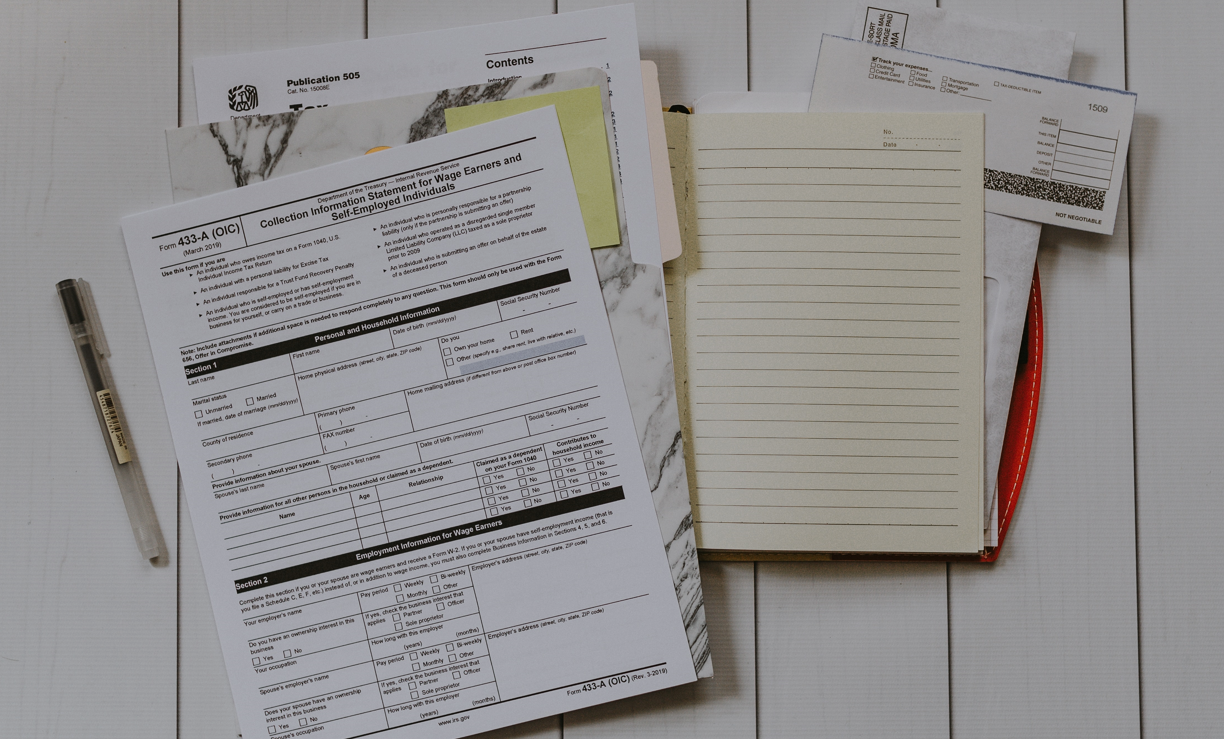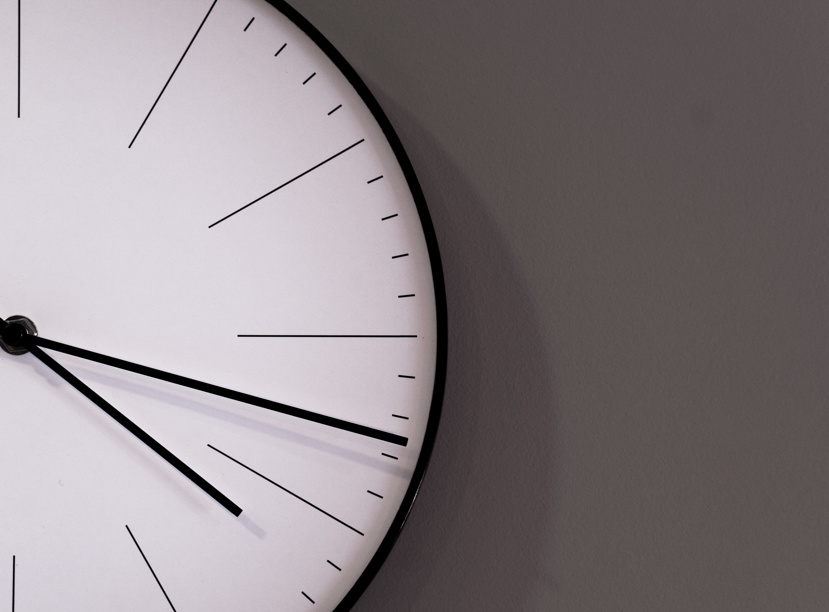Getting your taxes done is never a breeze, but we’re here to help
By Olev Edur
It’s time to complete your annual tax return, and the task isn’t getting any easier. That’s why we continue to suggest strongly that you avail yourself of some government-certified software to help take care of the myriad calculations and cross-references involved in completing your return properly. In particular, this software can automatically perform many of the calculations on the federal return’s Worksheet as well as many of those on the provincial/territorial returns.
A complete list of eligible software is posted on the Canada Revenue Agency (CRA) website at canada.ca/guide-netfile, and some of the products are free. These programs are also NETFILE-ready, meaning that you can file your return electronically rather than having to print out a ream of paper, seal it in an envelope, and trot it down to the nearest Canada Post outlet. An added advantage of filing electronically is that your return can be processed much faster—if you’re expecting a refund, it’ll be in your hands (or in your bank account, if you’ve arranged for direct deposit with the CRA) much sooner.
If you have a low income and your return is straightforward, you may be able to get free assistance in completing your return through the Community Volunteer Income Tax Program (CVITP) or the Income Tax Assistance – Volunteer Program in Quebec. To find out if you qualify and to locate a tax-preparation clinic near you, go to canada.ca/taxes-help or call the CRA at 1-800-959-8281.
In addition, the CRA has now introduced File My Return, a free service available to those who have a low or fixed income and whose tax situation is the same each year. If eligible, you’ll receive (or will already have received) an invitation with your tax package or by letter or email and can file your return simply by giving the CRA some personal information and answering a series of short questions on an automated phone service—no paper forms or calculations required.
Even if your income is so low that you’ll have no tax bill, you still have to file a return. In fact, if your income is that low, you should be eligible for a variety of tax credits and other benefits that you can get only if you file. These could include:
• the Guaranteed Income Supplement (GIS)
• the goods and services tax/harmonized sales tax (GST/HST) credit
• the Climate Action Incentive
• the Canada workers benefit (CWB)
• the Canada Child Benefit, and
• various provincial or territorial credits and benefits
If, on the other hand, you have a high income and a complex return, it may be worth your while to get professional advice from a financial planner or chartered accountant. While there isn’t a lot of wiggle room when it comes to paying your taxes, there are various strategies for minimizing your tax liability over the long term.
What’s New for the 2021 Return
There are numerous changes to the federal tax return for 2021, mostly minor and mostly dealing with COVID-19- related benefits and tax credits for those who are still employed or self-employed and suffered income loss in 2021. While they were introduced in 2020, these COVID-related benefits were extended into 2021, some in modified form. If you or a family member suffered a loss of employment income in 2021 due to COVID, you may have qualified for:
• the Canada workers benefit (CWB)
• the Canada Recovery Benefit (CRB)
• the Canada Recovery Sickness Benefit (CRSB)
• the Canada Recovery Caregiving Benefit (CRCB)
• relief payments provided by your province or territory
These amounts are generally taxable, and you’ll have received a slip such as a T4A with instructions on how to report the income. Some amounts may need to be repaid: if you received the CRB, for example, you may have to repay all or part of it if your net income was greater than $38,000 in 2021.
The CWB was changed for 2021, and a new “secondary earner exemption” was introduced. For more information, refer to Schedule 6, Canada Workers Benefit. If you were self-employed and received federal, provincial, or territorial government COVID assistance for your business, such as the Canada Emergency Wage Subsidy (CEWS), the Canada Emergency Rent Subsidy (CERS), the Canada Recovery Hiring Program (CRHP), or the Fish Harvester Benefit and Grant Program (FHBGP), you have to include these amounts in your business income or reduce your expenses by the amounts you received. If you received a government loan, the amount isn’t taxable, but you have to include in your business income any portion of the loan that is forgivable.
If you received federal benefits in 2020 that you had to repay in 2021, the amount you repaid will be reported in box 201 of your T4A slip or on your T4E slip. You can choose to claim a tax deduction for the amount you repaid in 2021 (on line 23210) or in 2020 (retroactively, by filing an amended return) or split the deduction between these two returns.
Also introduced in 2020 but changed for 2021 is the digital news subscription tax credit (up to $500 for 2021); this is a non-refundable credit claimed on line 31350; refer to the 2021 Federal Income Tax and Benefit Guide for details.
Similarly, the home office deduction for employees required to work from home was changed for 2021; you can now claim either a flat amount of $2 per day worked at home up to a limit of $500 or the actual costs incurred by completing and including in your return either Form T777S or Form T777 and entering the claim amount on line 22900 (“other employment expenses”). Refer to the Guide for information on which form to use.
A number of changes have been made to the tax package, such as improving the Guide’s readability and moving the text for some income, deductions, and credits to the federal Worksheet and schedules. The calculations on Schedule 9 (donations and gifts, for which the credit is claimed on line 34900 of the return) have been simplified. And as happens every year, most dollar amounts have been indexed to inflation.
If you live outside a census metropolitan area and want to continue receiving the Climate Action Incentive (to be delivered quarterly starting in July 2022), you must complete Schedule 14 and include it with your return. For more information, go to canada.ca/child-family-benefits.
With regard to the disability tax credit (DTC), the rules relating to the mental functions necessary for everyday life, life-sustaining therapy, and the calculation of therapy time have changed. For more information, see Guide RC4064, Disability-Related Information, or go to canada.ca/disability-credits-deductions.
Getting Started
The first step in doing your return is making sure you have all the necessary information slips, tax receipts, schedules, forms, and supporting documents. You may not need to include all of these (except for forms and schedules)—and obviously not if you’re filing your return electronically— but you should always keep them on hand in case you are questioned later.
If you’re missing any receipts or information slips, contact the issuer as soon as possible. If the documents haven’t arrived by the April 30 deadline (June 15 for the self-employed), try to estimate the appropriate (but missing) amounts using whatever information (such as pay stubs) you may have so that you can file your return on time and avoid late penalties. Make a note of your efforts to get the documents and keep this with your other return information; if you’re filing a paper return, include this information in a note attached to your return.
On the return form itself, make sure that all the necessary personal information (Step 1) is included on the first and second pages. If you own $100,000 or more worth of foreign property, answer accordingly at the bottom of page 2 of the return and complete Form T1135. Note that “foreign property” excludes non-Canadian holdings in registered plans, pensions, or TFSAs as well as assets used exclusively in carrying on an active business.
Step 2: Total Income
Getting into the nitty-gritty, the general rule is to declare all the money you received in 2021. There are exceptions, such as lottery winnings, gifts and inheritances, most life insurance proceeds, GIS payments, and GST/HST credits; a more complete list is included at the end of page 15 of the Guide.
Starting on page 3 of the return, declare all your income, including employment earnings, investment income, Old Age Security (OAS) benefits, Canada Pension Plan (CPP) or Quebec Pension Plan (QPP) benefits, and other pension payments. (In addition to pension benefits, if you’re aged 65 or older, income from RRIFs or annuities qualifies as pension income on line 11500; otherwise, such income goes on line 13000.) All of these income sources will be detailed on information slips (T4s and T4As), and you need only follow the instructions in the return or on the slips as to what goes where. In the case of pensions from a foreign country, refer to the Guide for details on where and how to declare this income. If you received GIS benefits, these are not taxable, but you must enter the amount on line 14600.
You are now allowed to split pension income with your spouse/common- law partner, provided you both complete Form T1032. The person receiving the split income must declare it on line 11500; the person contributing the income must deduct it on line 21000.
Most retirees also receive investment income in different forms: interest, dividends, and capital gains. Again, you should be provided with tax information slips for all of these income sources and need only follow the instructions in the tax return, although each type of income involves some additional calculations:
• There are two types of dividends (“eligible” and “other than eligible”). The amounts you actually receive are “grossed up” to taxable amounts and then you are accorded a dividend tax credit (DTC); the calculations differ depending on the type of dividends received. You must do the calculations on the Worksheet accompanying the return and then enter the appropriate amounts on lines 12000 and 12010; be sure to claim the DTC on line 40425.
• Declare interest income on line 12100 after you complete the appropriate section of the Worksheet. This line may also be used for declaring foreign interest or dividends. Note that the declaration of interest on multiyear GICs, term deposits, and similar investments is based on anniversaries of the purchase date; for example, if you bought a two-year GIC on June 30, 2021, the first year’s income— through June 2022—would be declared on next year’s return.
• Only one-half of any capital gain is taxable; enter this amount on line 12700 after you complete Schedule 3.
If you received any RRSP income in 2021, generally you must report this on line 12900. If, however, the income stemmed from the death of a spouse/ common-law partner, you may be able to claim a deduction for this amount— refer to Guide RC4177, Death of an RRSP Annuitant.
Self-employment income (gross and net amounts) must be entered on the appropriate lines from 13499 to 14300, depending on the type of business, after you complete a statement of income and expenses plus related forms; refer to Guide T4002 for the necessary forms and details on how to complete them.
Finally, if you are still employed or self-employed and received any COVID-related benefits in 2021, the T4A/T4E slips you receive will have instructions on where this income must be reported.
Those are the most common income sources for retirees, but your situation may be different, so go through page 3 carefully and make sure you’ve accounted for any other income sources; refer to the Guide if you aren’t sure where they should go.
Steps 3 and 4: Deductions From Total Income
After arriving at a total income figure on line 15000/line 31 (for some reason, the CRA has adopted two numbering systems) and copying it to the top of page 4, you deduct certain amounts to arrive at a net income and then a taxable income figure on page 5. The following are lines that might be of interest to retirees or those who are planning for their retirement:
• lines 20700 and 20800. If you made contributions to an RRSP or a pension plan, deduct the amounts on your T4A(s) here. Note that you may also need to enter amounts on lines 20600 and 20810 for your pension adjustment and for employer contributions respectively.
• line 21000. As noted above, if you’re splitting some of your pension income with a spouse/common-law partner, claim the amount here.
• line 22100. If you incurred carrying charges, such as for investment loans, or other expenses, such as accounting fees for completing your tax return, deduct them here.
• line 22200. This is where the self-employed can claim deductions for their CPP and/or QPP contributions, after completing Schedule 8 or Form RC381 (in the case of QPP).
• line 22900. If you were required to work from home as a result of COVID, you can claim a credit here. See “What’s New for the 2021 Return” above for more information.
• line 23210. If you had to repay any of your federal COVID-related benefits from 2020, they can be deducted here (and/or on line 23200 of your 2020 return— see “What’s New for the 2021 Return” above).
• line 23500. If you have COVID-related repayments for 2021 or are subject to an OAS clawback, you can claim a deduction for the amount to be clawed back or repaid here. Refer to the Guide for instructions.
Step 5: Taxable Income, Non-Refundable Credits, and Net Federal Tax
Once you have a taxable income figure, do the calculations to determine the federal tax on that income and carry this figure over to line 116 on page 7. Now you can claim a variety of federal non-refundable tax credit amounts on pages 5 and 6. The amounts are multiplied in most cases by 15 per cent to determine the credit; “non-refundable” simply means they can’t be used to generate a cash refund. You can, however, transfer unused portions of certain amounts to a spouse or other family members; refer to the Guide for details.
Every tax filer is entitled to the basic personal amount (line 30000) of $13,808, provided net income (line 23600) is $151,978 or less; if it’s more than $216,511, the personal amount is $12,421. Otherwise, complete the Worksheet calculation to determine your entitlement.
If you were 65 or older at the end of 2021, you can claim the age amount (line 30100) of up to $7,713, provided your net income is $38,893 or less; if it’s $90,313 or more, you get zero. Otherwise, complete the relevant calculation on the Worksheet to determine your entitlement.
If you have a low-income spouse/common-law partner or an eligible dependant, you can claim up to your basic personal amount, or your basic personal amount plus $2,295 if they were dependent on you because of a mental or physical impairment, on either line 30300 or 30400 (but not both).
In addition to the above impairment-related amounts and the caregiver deduction on line 21500, numerous credits are related to disabilities, medical expenses, and caregiver costs, including:
• the Canada caregiver amount (applicable to lines 30300, 30400, 30425, 30450, and 30500)
• the Canada caregiver amount for a spouse or common-law partner or an eligible dependant aged 18 or older (line 30425 after completing Schedule 5)
• the Canada caregiver amount for other infirm dependants aged 18 or older (line 30450)
• the Canada caregiver amount for infirm children under 18 years of age (lines 30499 and 30500)
• the disability amount for self (line 31600) of $8,662, subject to a Disability Tax Credit Certificate from a medical practitioner
• the disability amount transferred from a dependant (line 31800)— complete the relevant part of the Worksheet
• medical expenses for self, spouse or common-law partner, and dependent children born in 2003 or later (line 33099)
• the allowable amount for medical expenses for other dependants (line 33199)
You may also be able to claim a refundable medical expense supplement of up to $1,272 (line 45200 on page 8 of the return).
Note that the rules for these credits can be extremely complex. For more information about medical expenses, get Guide RC4065, Medical Expenses, and Income Tax Folio S1-F1-C1, Medical Expense Tax Credit; alternatively, go online to canada.ca/taxes-medical-expenses. For disability-related claims, see Guide RC4064, Disability-Related Information, or go to canada.ca/disability-credits-deductions.
Other non-refundable credits of possible relevance to retirees include:
• home accessibility expenses (line 31285) of up to $10,000; these can be claimed on the cost of modifications to make your home more accessible and livable—refer to the Guide and complete the relevant part of the Worksheet.
• the digital news subscription tax credit amount (line 31350); see “What’s New for the 2021 Return” above for details.
• the pension income amount (line 31400); you can claim up to $2,000 of any income that appears on line 11500.
On line 32600, you can claim all or part of certain amounts for which your spouse/common- law partner qualified but didn’t need in order to reduce his or her federal tax to zero, after completing Schedule 2. Qualifying amounts include Canada caregiver (line 30500), age (line 30100), pension income (line 31400), disability (line 31600), and tuition (line 32300) amounts.
Once you tally up these credits on line 110 and multiply them by 15 per cent and then add the credit for donations and gifts on line 34900/line 114 (after completing Schedule 9), you arrive at a total credit figure, which can be transferred to line 119 on page 7 of the return.
Be sure to claim your DTC and any other items that might apply to arrive at a net federal tax figure on line 42000. Then you must turn to your provincial/territorial return. Do all those calculations (as noted above, this is where a software program can be invaluable), transfer the resulting tax figure to line 42800 and the credit figure to line 47900 on page 8, and then enter any other applicable items on that page.
Make sure you sign and date the return, and you’re done for another year!
Photo by Kelly Sikkema on Unsplash






